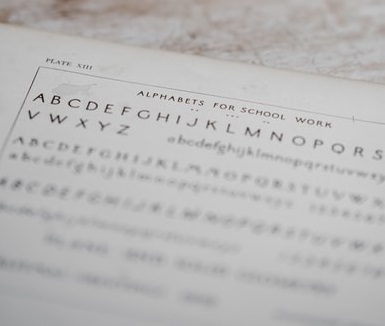
As educators, navigating text complexity in our classrooms is a challenge we often encounter. Students may struggle with dense texts filled with jargon, and complex sentence structures, hindering their comprehension and engagement.
The Gunning Fog Index is a valuable measure for assessing the readability of a text, that can help us assess and address readability, ensuring that our students have access to materials that are both challenging but at the right level.
By understanding and utilising this measure, we can create a more supportive and effective learning environment.
What is the Gunning Fog Index?
The Gunning Fog Index is a readability measure that indicates the complexity of a text and assigns it a grade level score. This score gives users an approximate grade level that a reader would need to comprehend the text easily.
The formula emphasizes the prevalence of “complex words” which are defined as words with three or more syllables.
By analysing sentence length and the percentage of complex words, the Gunning Fog Index provides a quick and easy way to assess readability.
Understanding Gunning Fog Index Level Ranges
As with all readability scores, the Gunning Fog Index has different levels that can have different meanings.
Here is a table outlining typical Gunning Fog Index scores, their corresponding educational levels, and examples of materials at each level:
| Gunning Fog Index Score | Educational Level (US) | Educational Level (UK) | Examples of materials at this level |
| 6-8 | Elementary School | Primary School (KS2) | Children’s books, simple informational texts |
| 9-12 | Middle School | Lower Secondary (KS3) | Textbooks, news articles, general fiction |
| 13-16 | High School | Upper Secondary (KS4-5) | Academic texts, technical writing |
| 17+ | College/University | Higher Education / University | Advanced academic papers, complex technical documents |
For example, a text with a Gunning Fog Index score of 12 indicates that it’s generally suitable for middle school students, and certain news articles may be relevant.
This same text would likely be challenging for elementary students but relatively easy for college students.
How to Calculate the Gunning Fog Index
Although the mathematical formula may seem complicated or intimidating, the mathematical values and the concept are simple.
The Gunning Fog Index formula is based on two key components:
- Average Sentence Length: The total number of words divided by the total number of sentences.
- Percentage of Complex Words: The number of complex words (3+ syllables) divided by the total number of words.
These components are combined in the following formula:
$$ \begin{aligned} \text{Gunning Fog Index} = & 0.4 \times \left( \frac{\text{Total Number of Words}}{\text{Total Number of Sentences}} + \frac{\text{Number of Words with 3 or More Syllables}}{\text{Total Number of Words}} \times 100 \right) \end{aligned} $$
By analysing both sentence length and the proportion of complex words, the Gunning Fog Index provides a comprehensive measure of readability.
What is a Good Score on the Gunning Fog Index?
If your text is meant to be easily understood by the general reader, aiming for a Gunning Fog Index score between 7 and 12 is recommended. This range typically aligns with the reading comprehension levels of most adults and high school students, making it suitable for a broad audience.
However, a “good” score on the Gunning Fog Index depends on several factors, including the students’ reading abilities, the purpose of the text, and the students’ grade level.
Put simply, texts intended for younger audiences should aim for lower scores, while texts for older or more advanced students can have higher scores.
For example: A text with a Gunning Fog Index of 17 might be suitable for a university student, but too challenging for a high school student.
Educators can use their professional judgment to determine the appropriate Gunning Fog Index for their students and the specific text.
Gunning Fog Index in the Classroom: Practical Applications
English educators can utilize the Gunning Fog Index Level in a variety of applications and methods, including:
- Selecting appropriate texts for different grade levels.
- Modifying existing materials to reduce complexity.
- Guiding students to write clearer, more concise sentences.
- Raising awareness of complex words and their impact on readability.
Enhancing Student Literacy Skills
Readability is crucial for student success. By using readability scores like the Gunning Fog Index, Flesch Kincaid or Flesch Reading Ease, educators can create a more accessible learning environment that fosters a love of reading and writing. Text Inspector can help you determine the Gunning Fog Index of a text, as well as other readability scores, allowing you to make informed decisions about the materials you use in your classroom.
Share
Related Posts

What is a Linguistic Register & Language Register? A quick way to improve your English
26 June, 2023
As speakers we tend to modify the way we speak depending on the context in which we find ourselves. Different environments require different registers.
For example, we do not communicate our anger towards a teacher in class the same way we would towards the referee in a football match.
Read More ->
Text Inspector and the Plain English Campaign
23 June, 2022
When it comes to the English language, it’s a fact that certain aspects can be […]
Read More ->
How Text Inspector can transform your talent acquisition process
26 September, 2024
In today’s competitive job market, Human Resources professionals have begun turning to text analysis tools […]
Read More ->